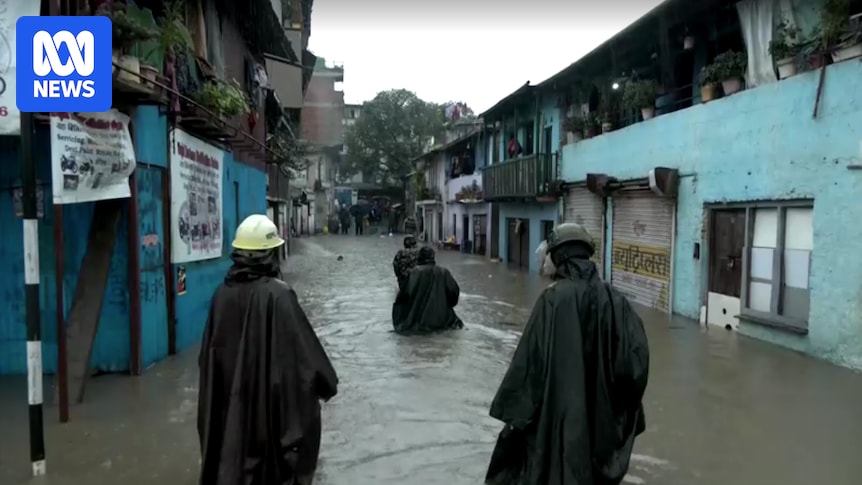
Heavy rains have unleashed a wave of destruction across Nepal and the Darjeeling region of West Bengal, India, resulting in landslides, flash floods, and the tragic loss of dozens of lives. Authorities report that roads have been blocked, bridges washed away, and communities left in turmoil as they grapple with the aftermath of the natural disaster.
In the eastern Nepalese district of Ilam, which borders India, 35 lives have been claimed by separate landslides, according to Kalidas Dhauboji, spokesperson for the Armed Police Force. The situation remains dire, with nine individuals reported missing after being swept away by floodwaters and three others killed by lightning strikes in other parts of Nepal.
Rescue Efforts and Regional Impact
Shanti Mahat, spokesperson for the National Disaster Risk Reduction and Management Authority, emphasized the ongoing rescue operations aimed at locating the missing persons. Meanwhile, across the border in Darjeeling, West Bengal, at least seven fatalities have been confirmed due to landslides triggered by relentless rainfall, as per local media reports.
Abhishek Roy, a Darjeeling district police official, stated, “Seven dead bodies have already been recovered from the debris. We have information about two more people,” according to a post from Indian news agency ANI on social media platform X. Efforts are underway to recover their bodies as well.
“The situation in Darjeeling and surrounding areas is being closely monitored in the wake of heavy rains and landslides,” Prime Minister Narendra Modi wrote on X. “We are committed to providing all possible assistance to those affected.”
Infrastructure Challenges and Government Response
The disaster has severely impacted infrastructure, with several highways blocked by landslides and floods, leaving hundreds of passengers stranded. In Nepal, domestic flights have faced interruptions, compounding the logistical challenges. In the southeastern part of the country, the Koshi River, notorious for causing deadly floods in the eastern Indian state of Bihar, has risen above the danger level.
Dharmendra Kumar Mishra, district governor of Sunsari district, reported that all 56 sluice gates of the Koshi Barrage had been opened to manage the water flow, a stark contrast to the usual 10 to 12 gates. Consequently, vehicular traffic on the bridge has been prohibited to ensure public safety.
Capital Cut Off and Weather Forecast
In Kathmandu, the temple-studded capital of Nepal, several rivers have overflowed, flooding roads and inundating homes, effectively isolating the city from the rest of the country by road. Weather officials have warned that the rains are expected to continue lashing the Himalayan nation until Monday, local time.
Authorities have assured that they are taking “maximum care and precautions” to assist those affected by the disaster.
Historical Context and Future Implications
Nepal and the Darjeeling region are no strangers to the destructive power of monsoon rains. Historically, these areas have faced significant challenges during the rainy season, with landslides and floods being a recurring threat. The current situation underscores the urgent need for enhanced disaster preparedness and infrastructure resilience.
Experts suggest that climate change may be exacerbating the intensity and frequency of such natural disasters, calling for a coordinated regional approach to mitigate future risks. The governments of Nepal and India, along with international aid organizations, are expected to collaborate on long-term strategies to bolster the region’s defenses against similar calamities.
As rescue operations continue and the affected communities begin the arduous process of recovery, the focus will inevitably shift towards rebuilding and implementing measures to prevent such tragedies in the future. The resilience of the people in these regions will be tested, but with concerted efforts, there is hope for a safer and more secure tomorrow.





